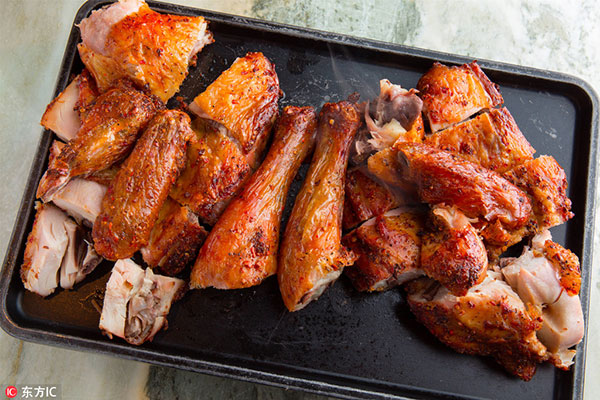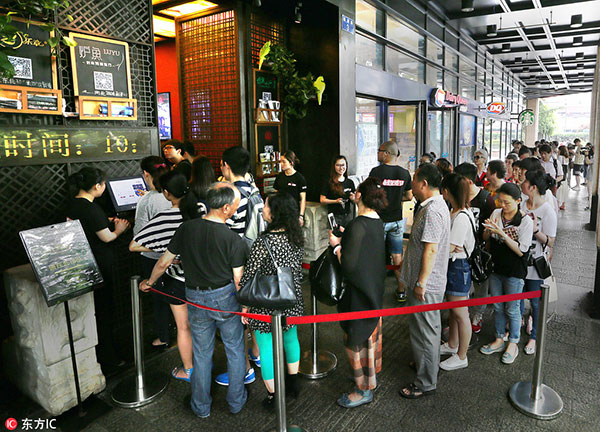News&Insights
- The power of play: Toymaker Pop Mart debuts on Hong Kong market
- Beauty skin deep, and pockets lined
- Crackdown on excess wrapping in parcel delivery industry to start soon
- Ready-to-eat meals a niche for big-name restaurants
- Consumption upgrade bringing new boon to top-end rice producers
- Arrow sews up 10-year expansion plan
- Chain operations buck trend to expand
ASK AND QUESTION
Lawyers Article
Chain eateries are bringing local Hangzhou specialties everywhere
Source: franchise lawyer network Author: Beijing lawyers Time: 2016-09-18
 If you weren't hanging out with G20 leaders recently, you don't have to miss out on what they might have eaten. In fact, you don't really have to be in Hangzhou to enjoy the culinary traditions of Zhejiang's provincial capital. Two popular eateries that started there, Green Tree and Grandma's Home, have grown into huge networks with outlets in many Chinese cities.
If you weren't hanging out with G20 leaders recently, you don't have to miss out on what they might have eaten. In fact, you don't really have to be in Hangzhou to enjoy the culinary traditions of Zhejiang's provincial capital. Two popular eateries that started there, Green Tree and Grandma's Home, have grown into huge networks with outlets in many Chinese cities.
Of course, there's nothing like being where it all began.
Ordering can be a challenge for foreigners: The mark-it-yourself menu is only in Chinese at many locations. The staffs, while equally lacking in English, are overeager to help: At one Green Tea location in Hangzhou, for example, my server scanned the restaurant's QR code into my phone for me, and we navigated the photos and my guidebook's recommendations to a harmonious conclusion. Without her help, I would have accidentally ordered the bullfrog, a house specialty but not really my cup of tea, when I really wanted the Green Tea roast chicken.
Classics on offer at both include hongshao dongpo rou, red-braised pork belly cooked with ginger, garlic, star anise and other fragrant spices, a hint of chili pepper, sugar, light and dark soy sauce and rice wine. Slow cooking makes the fat and skin gelatinous, so it melts easily in the mouth. The sauce is thick and sweet, a great example of how Hangzhou and other cuisines in southern China use sugar to cook meats in addictive ways that are often a surprise to Western diners.

Green Tea
Each Green Tea-named for one of the area's prime commodities-is set in a bare-brick interior that allows old tea-fermentation vessels and a big collection of clay teaware to stand out on the simple walls. Rattan implements and colorful, flowery cushions add additional layers of charm to the decor.
The Green Tea chicken boasted an interesting, slightly salty mix of herbs and spices. I wasn't sure if "Green Tea" was a reference to the restaurant name or to actual longjing leaves. If tea was present in some way, its was too subtle for my non-Chinese palate.
The star at our meal was the eggplant clay pot. Chunks of the vegetable, the long, purple Asian variety, glowed like amethyst jewels at the top of the pot. They were doused with a reduction of soy sauce that was slightly sweet, and stewed with a big cluster of Japanese mushrooms. A bit of minced garlic punctuated the sauce, and there was a sprinkling of spring onion on top. Together, it tasted as good as it looked, and was a great match for the tender but unsauced chicken.
Green Tea grilled fish, pepper bullfrog, curry chicken and Jiujiang mapo fish are other popular specialties.
We'd been warned off the joint's coffee-said to be laden with super-sweet creamer. But why would you come to a place called Green Tea and drink coffee, anyway?
We'd also been warned to expect a long wait to get a table, but because we made this our first meal of the day, and arrived for lunch right at 11 am, we walked into a nearly empty restaurant. The conventional wisdom does apply, however, even in the sweltering days of August: By 11:30 the place was hopping, and people were standing in the aisles with not so subtle glances at our jewel-toned eggplant.

Grandma's Home
My grandma's home was a quiet place to have a meal. This franchise, however, is a jumpin' joint, popular with locals for serving up classic Hangzhou favorites that your granny might make if she was a Zhejiang old-timer.
Founded in 1999, the restaurant has dozens of outlets around town, but the Hubin Lu branch-a short walk from West Lake-gets more buzz than other locations.
We started our meal with shelled shrimp with cooked tea leaves, a local favorite with sauteed shrimps gleaming in a lightly starchy sauce. The dragon-well (longjing) tea flavor is mild, but lingers on the palate even when you dip the shrimps in the light and fragrant vinegar sauce served on the side. (You're in Hangzhou, so think vinegar more than soy sauce, though both may be on offer.)
In an aquatic mood here on West Lake, we'd planned to order the locally famous Mandarin fish, also know as squirrel fish: a picturesque platter with spiral-cut fish flesh bathed in bright sweet-and-sour sauce. We'd come to the restaurant a little late that night, however, and this fish was sold out. (Bu yao means "We don't have it.") So we opted for a yellow croaker, which came served whole and simmered in a light meat sauce reduced to a fine gravy. The fish was tender and delicious, and the gravy offered a treasure hunt of pork tidbits and whole garlic cloves elevated to godliness in the poaching process.
Swimming alongside the fish in the sauce were four rice cakes, a popular side dish that may seem gummy to the uninitiated.
Longjing tea chicken is one of the restaurant's most popular (and most copied) dishes. It's a modern marriage of two of Hangzhou's traditional dishes: the beggar's chicken and Longjing shrimp.
Chef Yuan Zixiang told CNN in a 2011 interview that wrapping the tea-soaked chicken in parchment paper then roasting, rather than boiling, makes the meat amazingly moist with a fall-off-the-bone tenderness.
"It was the philosophy of our owner, Wu Guoping, when he opened the chain's first restaurant that it should provide food that fellow Chinese citizens are able to afford and enjoy in a nice setting," business manager Liu Wei said in the same interview.
In search of a vegetable side dish, our eyes kept coming back to the sweet green peas, in part because we like them and in part because there was a line of approving red stars beside them on the menu and similar raves on dianping.com. Wild raves ... for peas? We took the bait, and while the peas were brilliant in color and taste, they were, well, peas. Tasty but fundamental.
We finished out meal with ma ci, a firmer version of rice cake that's served as a roll with brown sugar, sesame and peanuts. It's a popular local snack, often on offer in selections of dim sum.
The beverage selection includes rice wine, Chinese white liquor (baijiu), local beer and Carlsberg, and a variety of teas and fruit juices.
The restaurant only accepts reservations for groups of 10 or more; to avoid the typical wait of more than a half-hour, go before 6:30 pm or after 8 pm, but note that most Grandma's Home restaurants-and many other restaurant, in Hangzhou-close at 9 pm.

 京公网安备:
京公网安备:
